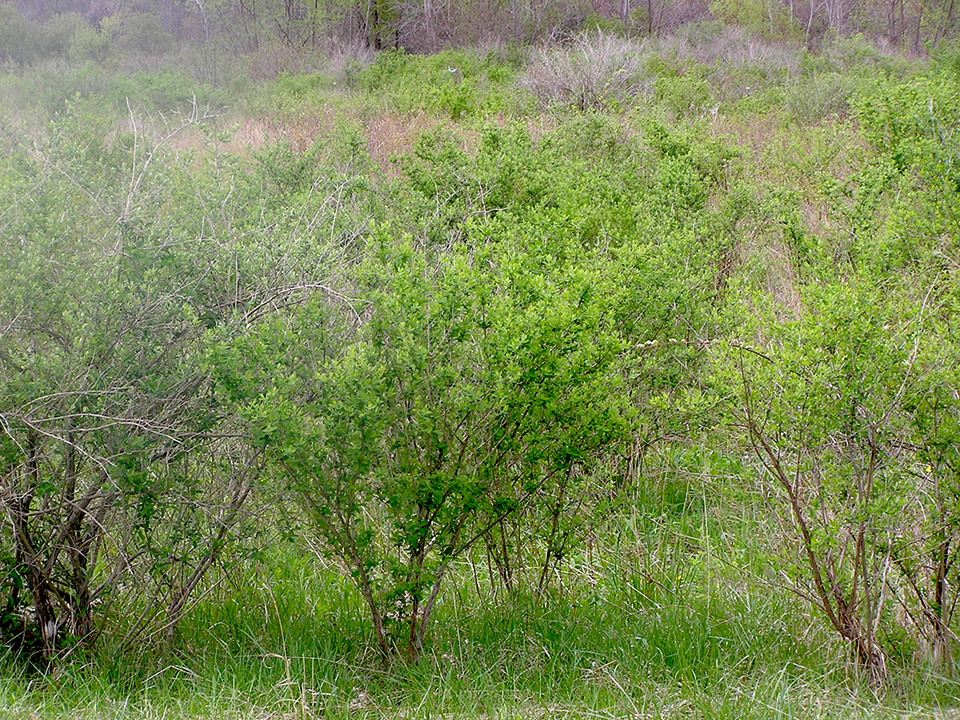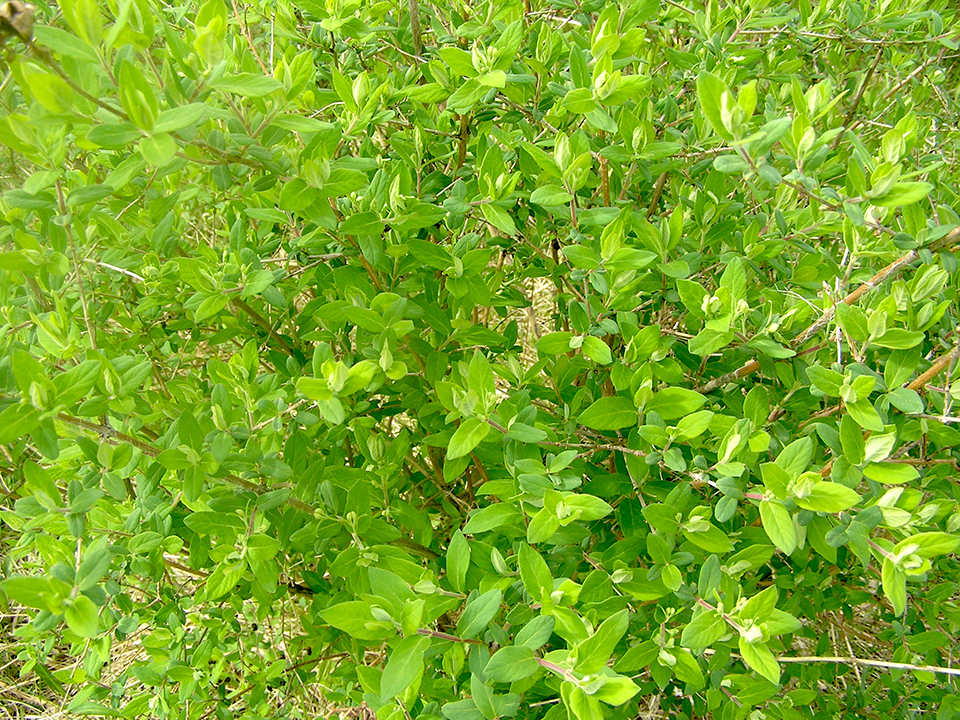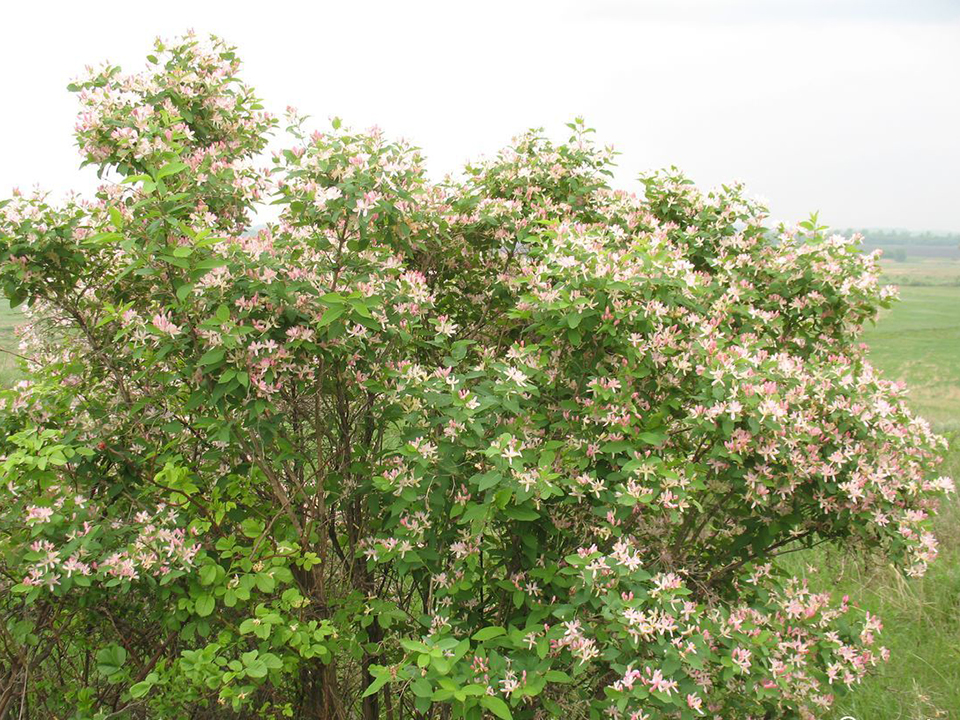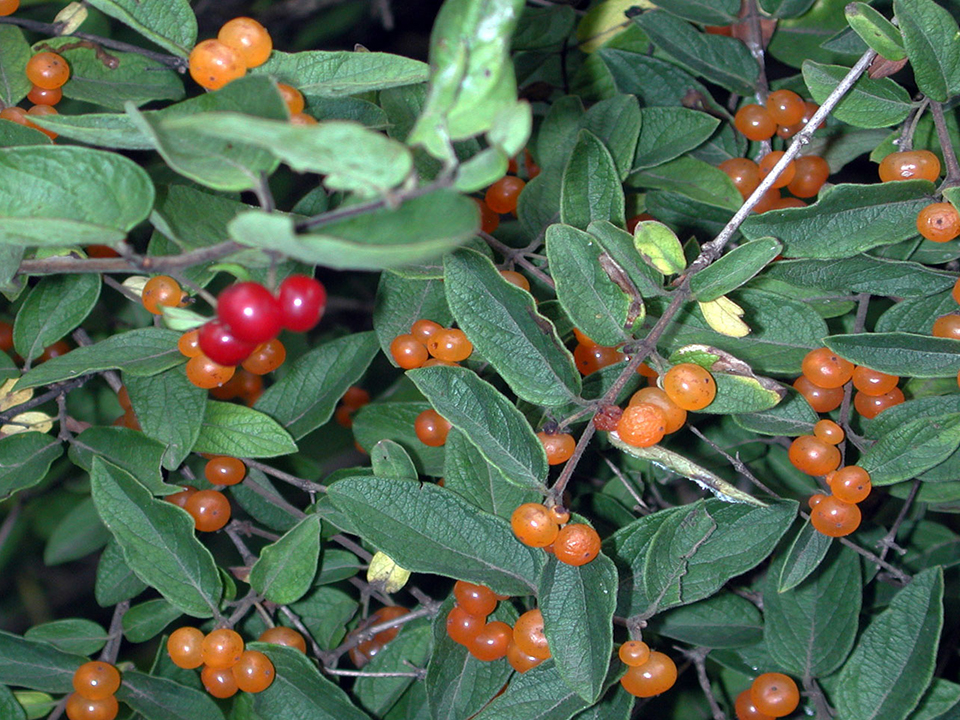
Honeysuckle plants in early spring. Honeysuckle leafs out before any native shrubs so they are easy to identify and control at this time of year.
Species Name: Lonicera tartarica, Lonicera morrowii
Common Name: Tartarian Honeysuckle, Morrow’s honeysuckle
Origin: Tartarian: Central & Eastern Asia Morrow’s: Japan, Korea and China
Distribution: Found throughout the eastern US
Identification: Tartarian, Morrow’s and a hybrid between the two species will be grouped together and referred jointly as bush honeysuckles. The plant is a sprawling, dense multi-stemmed shrub that may reach 12 foot in height and spread. The small oval paired leaves are opposite on slender grey twigs. The plant suckers and branches profusely from the root crown. Branches and twigs twist and fork wildly making a dense impenetrable thicket. Branches grow straight for only a few inches before forking in a new direction. Large shrubs have a light gray thin flaky bark.
Diagnostic characteristics: One of the first plants to leaf out in the spring, long before any native shrubs begin to leaf out.
Small oval leaves are a light lime green color, which contrasts sharply with the darker green of most native plants.
Flowers are tubular, fragrant and range from pink to white. They cover the plant in late spring.
Small round fruits develop in pairs from the flowers in mid-summer. Fruits range in color from orange to red.
There is no appreciable fall color, leaves remain on the plant until cold or snow knock them off.
Biology and Spread: Honeysuckle can grow in a range of soils and habitats from full sun to shade. Open fields are most at risk of invasion. It will colonize and monopolize old fields, open woods, wetlands and any open spaces, which means it will grow almost anywhere. It establishes easily and begins producing seed at a young age. It has no natural insect or disease control on its population growth and spread. Also deer will not eat it, so heavy deer browse will selectively favor honeysuckle over native plants.
In full sun it grows, as a dense mounded shrub growing wider than it is tall. It quickly begins to shade the ground eliminating any vegetation beneath it. Most of the foliage and growth of honeysuckle is from ground to face level to people, which quickly interferes with human use of an area. In shade honeysuckle often grows like a vine seeking sunlight. It will use other plants for support and once it has reached the light will rapidly cover its supporting plant or creep horizontally for many feet towards the light.
The root system of honeysuckle is weak and larger plants readily fall over from their own weight or from snow and ice. The plant will not die but continue to grow horizontally. Branches in contact with the ground will develop new roots at that location.
Ecological threats: Honeysuckle poses a serious threat to all lands where it is found. Birds readily spread the seeds to new locations and once it gets established and begin to produce seed it will proliferate widely. It produces abundant foliage in proportion to the size of the twigs and plant, which enables it to shade out its competition. It also leafs out earlier than any other plant and retains it leaves later in the year giving it another competitive advantage.
Control methods:
1) Cut Stump Treatment:
Cut stump treatment is one of the most efficient methods for controlling honeysuckle. A brush saw is the most efficient tool for cutting honeysuckle because of the large numbers of flexible stems and the interlocking nature of the branches. A chain saw may be used on larger stems. The wood is weak and brittle and cuts easily.
As honeysuckle resprouts profusely from the stump after cutting, the cut surface needs to be treated with a herbicide. A 10% to 15% solution of glyphosate (the active ingredient in Round-up) is applied to the cut surface. A hand held spray bottle works well for applying the herbicide to the cut stem. Add a spray colorant to the bottle so you can tell which stems have been treated.
Large numbers of honeysuckle plants can be controlled using glyphosate as a foliar spray. Spray from mid summer through fall as long as the leaves are green and actively photosynthesizing. Use a 2% solution of glyphosate with a spray adjuvant.
The root system of honeysuckle is fairly shallow and weak, especially in shade or wet soils. The plant will continue to leaf out and grow for many years even though it is only loosely anchored to the soil. Honeysuckle roots are prone to root rot. These plants can be uprooted by pulling and even large plants can be pulled up by hand.

Honeysuckle plants in early spring. Honeysuckle leafs out before any native shrubs so they are easy to identify and control at this time of year.

Foliage of honeysuckle in summer. Opposite oval shaped leaves and light green color are easy to learn and recognize.

Honeysuckle bush in flower in early summer.

Honeysuckle fruits are produced in pairs like the flowers. Fruits may range in color form orange to red. Fruits are abundant and readily eaten
but they provide low nutritional value for birds.